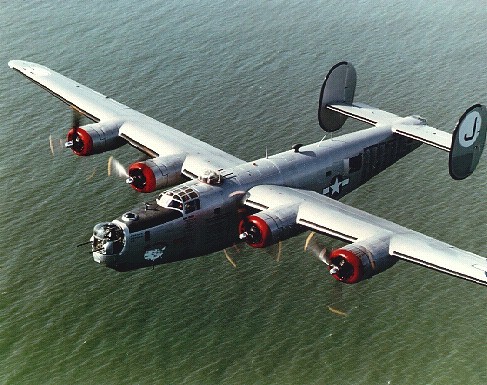@FieldMarshalGames:
While I have your attention.
Lets talk American Bombers.
What do ya’l think about the Liberator? It was actually the most common US bomber of the war and was produced more than an other US aircraft. I want to do something DIFFERENT from the WOTC units.
Your comments and feeling on this please.
Which ones has WOTC modeled in the past? There are 4 main types.
And the candidates are:
Here is a list of the main types of land-based World War 2 bombers, with the approximate quantity produced of each type .
B-24 Liberator (19200) - 4-engine very long range heavy bomber since mid 1941, carrying up to 6 tons of bombs. It was the allied bomber with the longest range during most of the war, and was used accordingly in all war fronts, both in very long range bombing missions, such as attacking Nazi Germany’s only natural source of oil, in Ploesti, Romania, and by very long range anti-submarine patrols all over the Atlantic Ocean, which greatly contributed to defeating the German submarines. In the anti-shipping role it was operated in large numbers by the Coastal Command of the Royal Air Force.
B-17 Flying Fortress (12700) - the world’s first 4-engine long range heavy bomber (1935), its excellent basic design enabled the production of ever improved types, and it fought everywhere until the end of World War 2. Built with the concept that a day bomber should be able to self-protect from enemy fighters, the common B-17G type had 8 gun positions with 13 heavy machine guns, arranged to cover all directions. It had a crew of 10 and was equipped with advanced electronics, and could carry over 5 tons of bombs, but mostly carried much less, depending on the mission’s range, and as little as just 1.8 tons in missions to Berlin, which is what the British Mosquito bomber carried to Berlin with much greater precision, less losses, a crew of just 2, and no guns, thanks to its high speed which made the Mosquito much harder to intercept.
B-25 Mitchell (9800) - the main American medium bomber since 1940, carrying up to 1.8 tons of bombs and properly protected with multiple guns, armor, and self-sealing fuel tanks. It had a formidable dedicated attack version which excelled in anti-shipping missions, carrying a mighty 75mm gun in the nose, plus up to eight forward firing heavy machine guns, plus a torpedo or bombs. The B-25’s most daring and famous mission was the Doolittle Raid in April 1942, the first bombing of Japan, in which 16 modified B-25s took off from the deck of an aircraft carrier in the North Pacific, bombed Tokyo in total surprise, and landed in China. This much needed moral-boosting “impossible” mission, after the Japanese attack in Pearl Harbor and the rapid Japanese conquest of South East Asia, shocked Japan and resulted in abandoning plans to attack Australia or India in favor of attacking Midway and transferring four Japanese fighter squadrons from the war front to home defense.
B-29 Super Fortress (4000) - big 4-engine very long range heavy bomber designed to reach Japan from Pacific island bases. It had 5 gun turrets and could carry up to 9 tons of bombs internally or even two 10-ton bombs under its wings, but typically it carried 4-5 tons in the long range missions to Japan. It bombed Japan since June 1944, initially with high altitude day missions, but since the strong winds greatly reduced precision, a new tactic was adopted in which the guns were removed and the bombers flew night missions at low altitude and higher speed, and destroyed Japan’s cities one by one with massive attacks which created huge fire storms. Two B-29s ended World War 2 with a new weapon which created the ultimate city-destroying fire storm, the atomic bomb.















